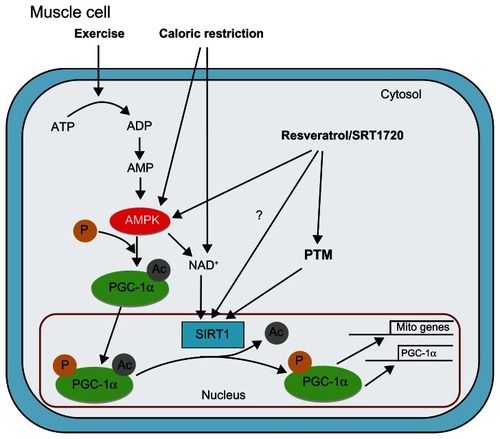Figures & data
Figure 1 Model of pathways leading to activation of the silent mating type information regulation 2 homolog 1 (SIRT1)/peroxisome proliferator-activated receptor γ coactivator-1α (PGC-1α) axis in skeletal muscle: SIRT1 deacetylase activity is directly influenced through posttranslational modification and indirectly through exercise, caloric restriction, and pharmaceutical activation.
Abbreviations: Ac, acetyl; ADP, adenosine diphosphate; AMP, adenosine monophosphate; AMPK, adenosine monophosphate-activated protein kinase; ATP, adenosine triphosphate; NAD+, nicotinamide adenine dinucleotide; P, phosphate; PGC-1α, peroxisome proliferator-activated receptor γ coactivator-1α; PTM, posttranslational modification; SIRT1, silent mating type information regulation 2 homolog 1.
